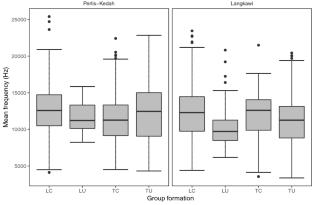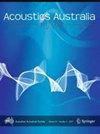Whistle Variation in Indo-Pacific Humpback Dolphins (Sousa chinensis) in Relation to Behavioural and Environmental Parameters in Northwestern Peninsular Malaysia
Abstract
Dolphins have a diverse acoustic communication system which includes whistles necessary for their survival. Whistle variation in dolphins could be related to the group behaviour, group size, formation and also environmental factors such as water depth, tidal phases and location. Such information is relatively unknown for the dolphin populations in Malaysia. This study aims to understand the whistle variation in Indo-Pacific humpback dolphins found in two sites in northwestern Peninsular Malaysia and possible factors that influence their whistles. A total of 4971 whistles were detected with whistle rates and parameters analysed. A GLMM analysis showed that whistle rates in both sites and in differing group sizes had significant differences. Only the mean whistle frequency significantly differed in differing group formations. Indo-Pacific humpback dolphins in a loose and uniform group had a lower mean frequency compared to other group formations. Other parameters such as the whistle duration and coefficient of frequency modulation did not show significant differences in differing behaviour, size, formation, water depth, tidal phases and location. This study is important and particularly valuable for understanding the species’ bioacoustics in the wider region of Southeast Asia.


 求助内容:
求助内容: 应助结果提醒方式:
应助结果提醒方式:


